
All categories
Featured selections
Trade Assurance
Buyer Central
Help Center
Get the app
Become a supplier

(4501 products available)

































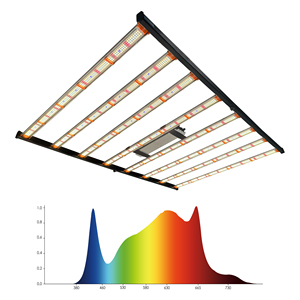
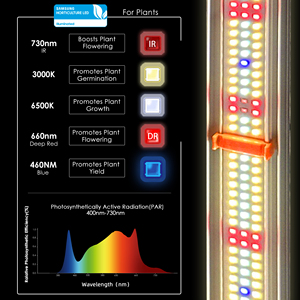

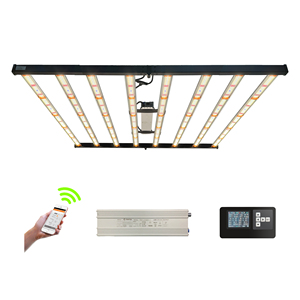
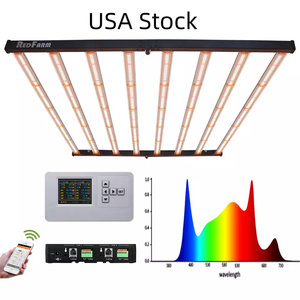
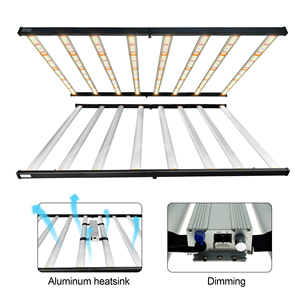






LED far-red light refers to light-emitting diodes (LEDs) that primarily emit wavelengths in the far-red region of the electromagnetic spectrum, specifically around 700 to 800 nanometers (nm). These wavelengths are just beyond the visible red light spectrum and are important for various biological and physiological processes.
LED far-red lights are used in different applications, particularly in plant cultivation and research. Here's an overview of their types:
Supplemental Lighting
LED far-red lights are often used as a supplement to other grow lights, such as LED blue and red lights. When combined with blue and red wavelengths, they help optimize photosynthesis and promote healthy plant growth. Additionally, they improve flowering and fruiting stages. Ideally, these LEDs are used in greenhouses and indoor grow operations.
Phytochrome Regulation
LED far-red lights are used in agricultural research and experiments to study and regulate phytochrome-mediated responses. Phytochromes are plant pigments that respond to red and far-red light. These LEDs are also essential for seed germination, stem elongation, and flowering time control.
Plant Stress and Defense Mechanisms
Far-red light can influence plant stress responses and defense mechanisms. For instance, it may help plants acclimate to stress conditions such as drought or high temperatures. In this context, LED far-red lights are used in plant physiology studies and stress response research.
Veterinary Medicine
LED far-red lights emit wavelengths used in some forms of laser therapy for animals. This therapy, also known as low-level laser therapy (LLLT), helps promote healing, reduce pain, and improve tissue regeneration in veterinary medicine.
Horticultural Lighting
LED far-red lights are specifically designed for horticultural purposes. These come in different configurations, such as bars, panels, or strips, which can be integrated into existing grow light setups. They are beneficial for commercial growers, research institutions, and horticulturalists.
As mentioned earlier, LEDS far red light has a wide range of applications, including:
When purchasing LED far-red lights, buyers should consider several factors to ensure they are getting the appropriate products for their intended use. Here are some of them:
Purpose
Buyers should determine the primary use of the LED far-red lights. For instance, are the lights meant to be used for plant growth, health and wellness, aesthetic lighting, or a combination of these functions? The intended use will help buyers choose the right specifications and features.
Wavelength and Spectrum
Normally, far-red LED lights have a wavelength ranging between 700 and 750 nanometers. Buyers should look for lights with a peak wavelength that aligns with their specific needs.
Quality of Light
Business owners should choose LED far red lights that produce a high-quality light. Such lights should have a high PAR output and a low blue and green light content. This is important for minimizing plant stress.
Efficiency
Business owners should opt for LED far red lights that are energy efficient. Efficient lights will have a lower operational cost and higher output.
Design and Features
Buyers should check the design of the LED far-red lights. They should opt for lights that can be easily integrated into existing setups. Also, they should look for additional features like dimming capabilities, programmable settings, and integrated spectra.
Build Quality and Durability
Business owners should choose LED far red lights that have a robust construction. The lights should have high quality components for reliability and longevity. Also, if purchasing lights for outdoor use, they should be weather resistant.
Warranty and Support
Business owners should opt for suppliers who offer a comprehensive warranty on their LED far-red lights. They should also consider the level of customer support the supplier offers to determine the quality of services they will receive.
Reviews and Reputation
Business owners should take their time and research on the reputation of the supplier. They can check online reviews and testimonials to get more information on the supplier's quality of products and services. This will help them make informed decisions.
Q1: Do far-red LED grow lights need to be used with other lights?
A1: It depends on what you are growing. If you are growing cannabis, you can use far-red lights with other lights. Using far-red lights with blue and red lights will give you the nutrients you need. Also, using far-red lights with other spectrums will mimic the natural sunlight.
Q2: What do far-red LED lights do?
A2: Far-red LED lights help plants in various ways. For instance, they help in germination, seedling growth, stem elongation, and flowering. Also, they help plants to prevent water loss by closing the stomata. Additionally, far-red LED lights help to increase biomass in plants.
Q3: How does LED light affect plant growth?
A3: LED lights affect plant growth positively. For instance, blue lights stimulate vegetative growth. On the other hand, red LED lights stimulate flowering and fruiting. Ideally, the different LED lights affect plant growth positively by ensuring plants grow optimally.
Q4: What color light is best for plants at night?
A4: During the night, blue and red lights are best for plants. This is because, at night, plants should rest. Therefore, blue and red lights will ensure plants get the rest cycle. As stated, blue lights stimulate vegetative growth while red lights stimulate flowering.